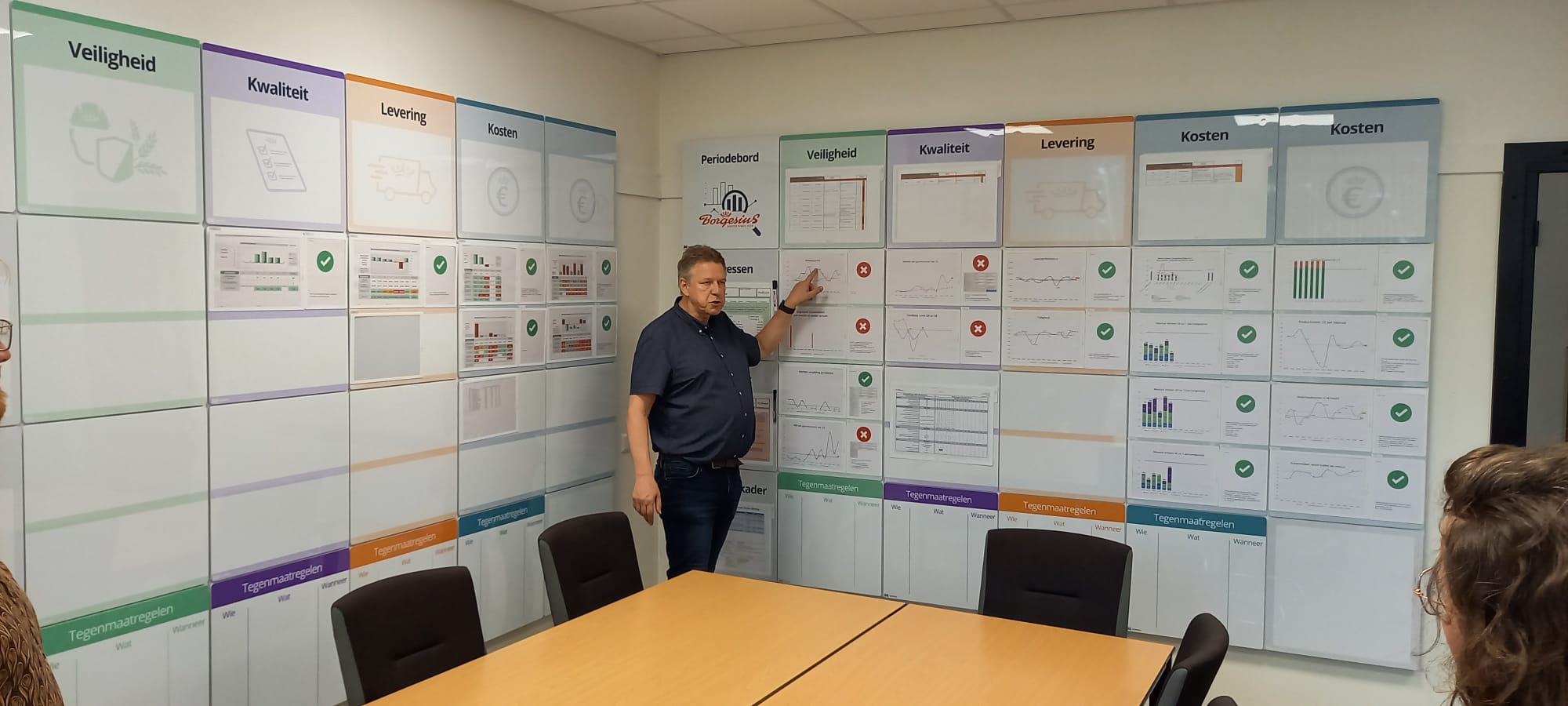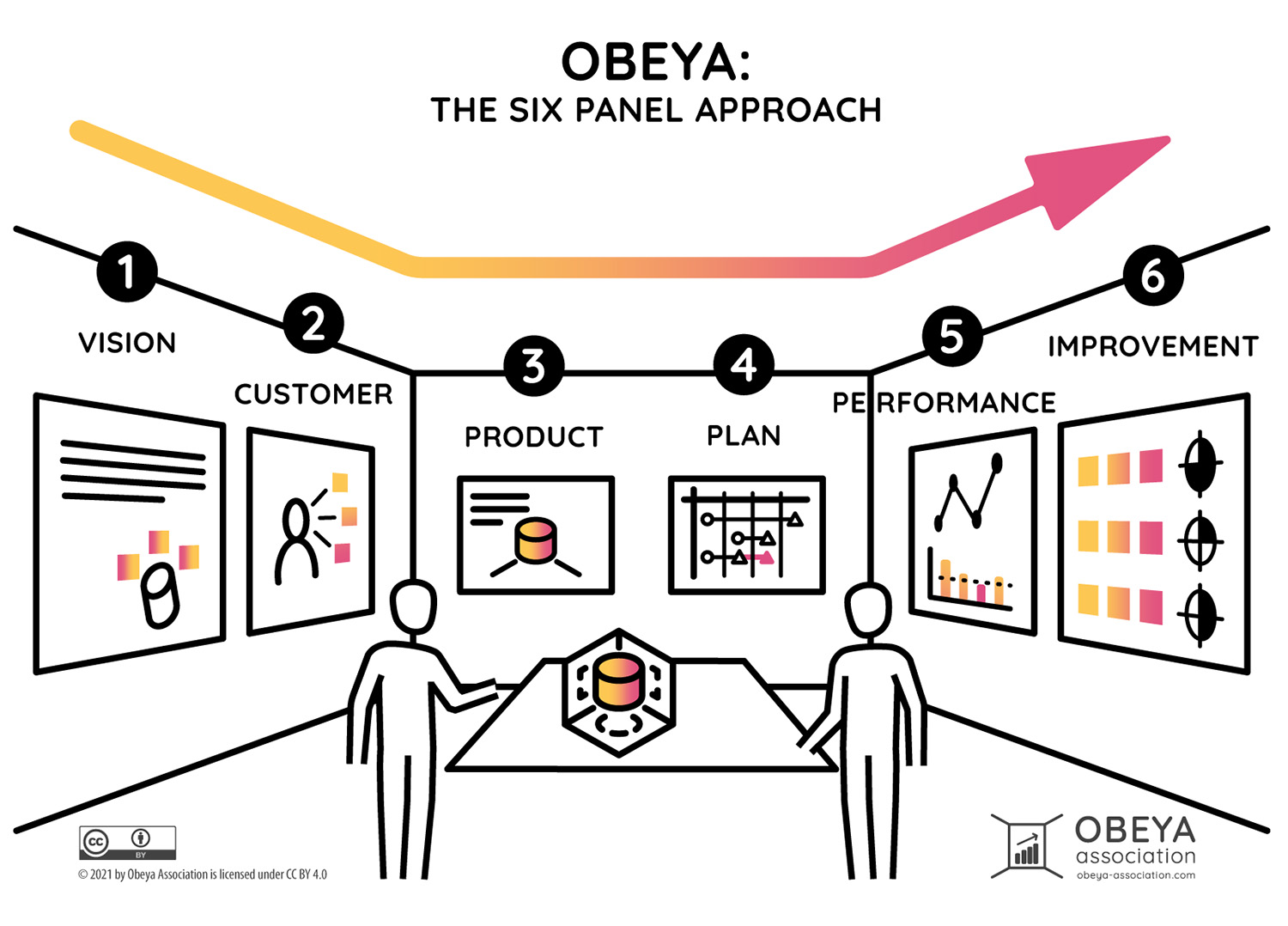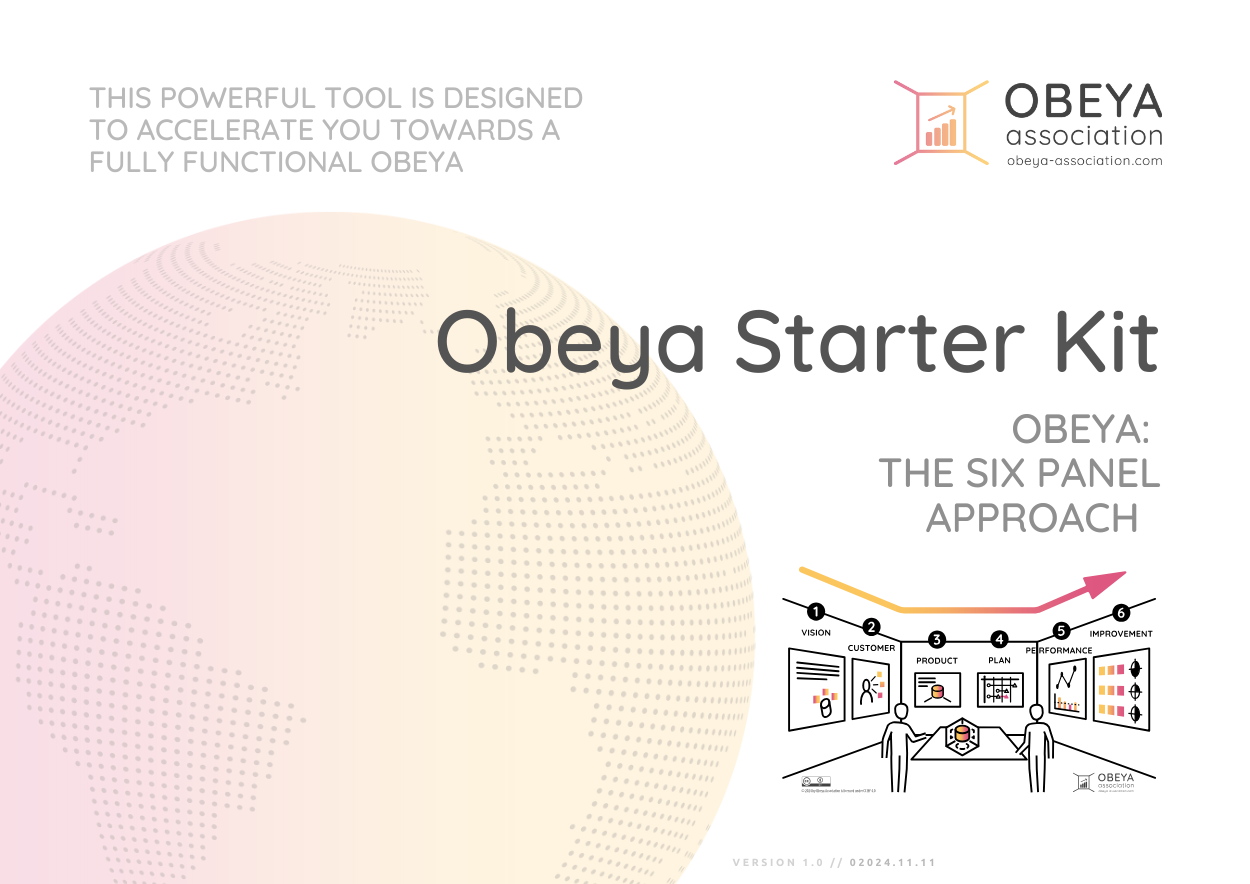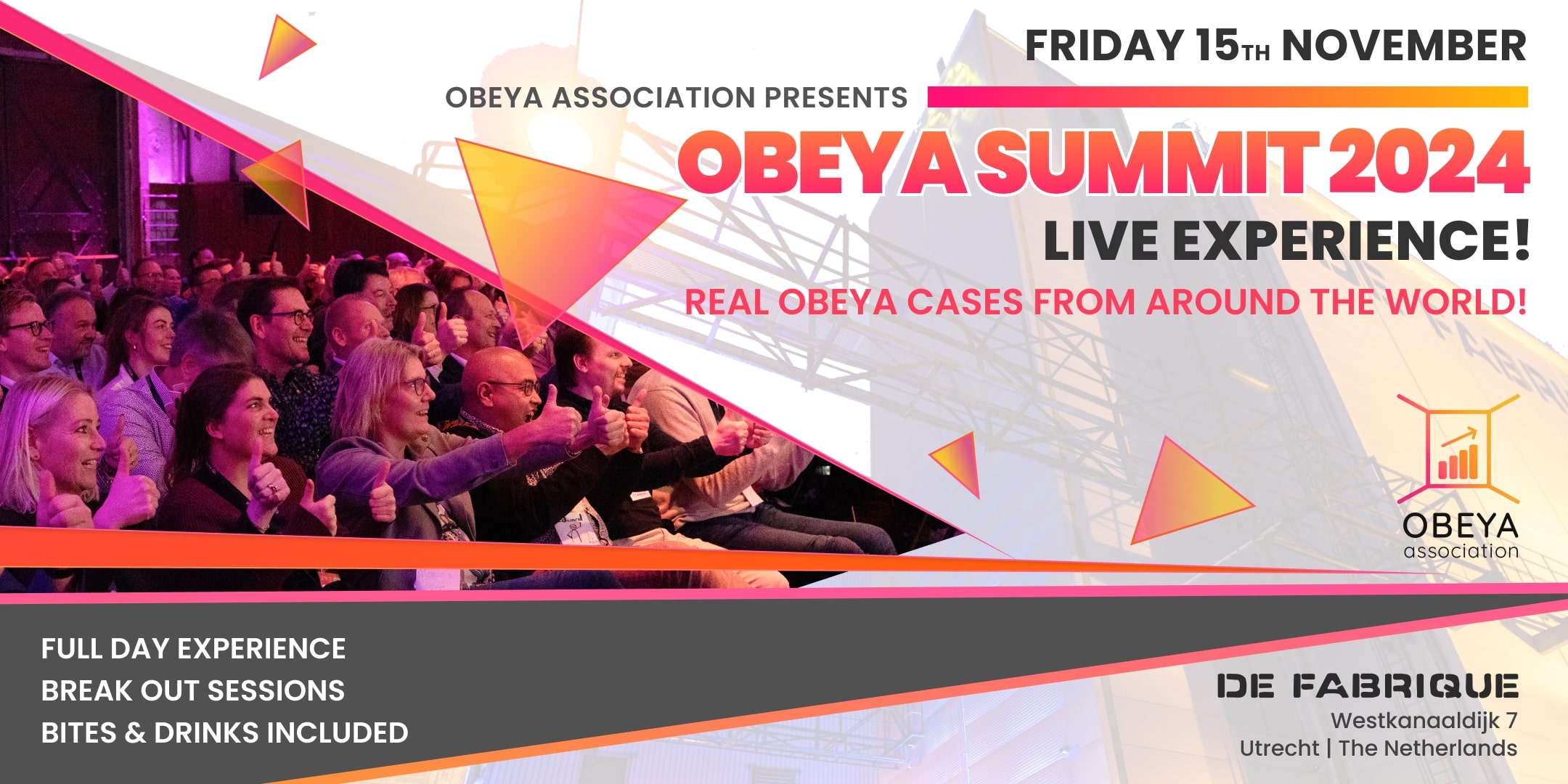What is the best Obeya Method?
There is no single “best” way to run an Obeya, as its effectiveness depends on how well it aligns with your organization’s needs. However, by following the 11 principles and leveraging the expertise of Obeya Builders and Obeya Hosts, you can ensure your Obeya evolves in the right direction.
Over the years, certain approaches have proven to be particularly effective in structuring an Obeya. One of the most widely used frameworks is the Six Panel Approach, designed to create a balanced, high-performing Obeya space.

The Six Panels approach
The Six Panel Approach is a structured framework, much like PDCA, that organizes your Obeya into six essential areas, each serving a specific purpose:

1 VISION
Defines long-term direction and key objectives. Answers strategic questions like:
- Where do we want to be in 5 years?
- What competitive challenges do we need to address?
2 CUSTOMER
A dedicated space for customer-related insights, including:
- Customer journeys
- Complaint trends, NPS data
- Market insights for sustainable decision-making
3 PRODUCT
Focuses on product development and innovation, ensuring alignment with customer needs. It is not about production efficiency but rather the evolution of products based on feedback and market trend
4 PLAN
Maps daily work against strategic objectives, ensuring that:
- Teams recognize their contribution to company goals.
- Work is visually linked to its strategic importance.
5 PERFORMANCE
Provides a clear, visual representation of key performance indicators (KPIs):
- Quality metrics
- Efficiency statistics
- Employee engagement and satisfaction
6 IMPROVEMENT
A space dedicated to continuous improvement, typically structured around:
- PDCA cycles
- Kata routines and experiments
- Small, incremental changes that drive sustainable progress


